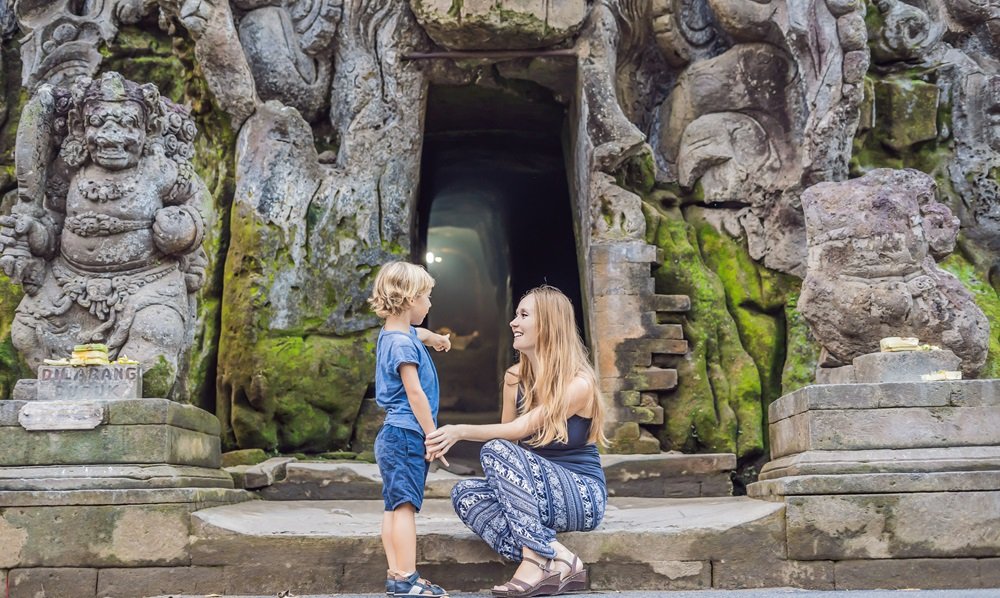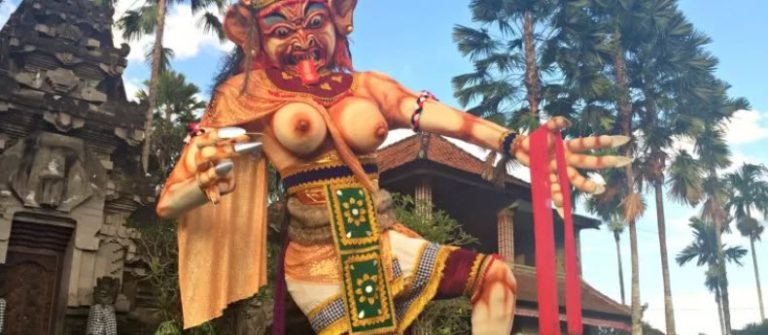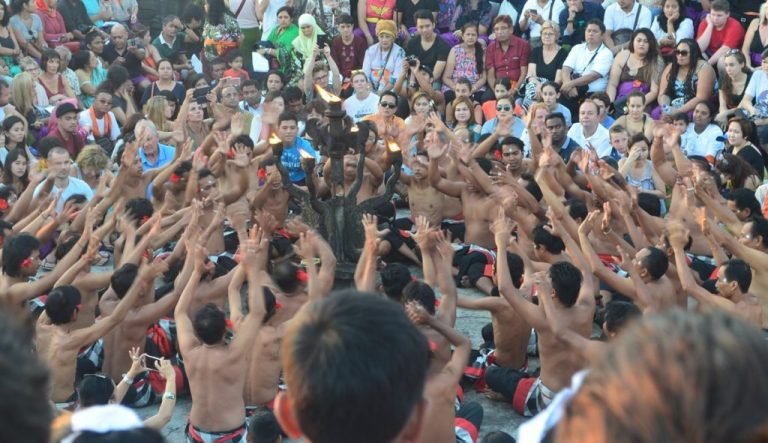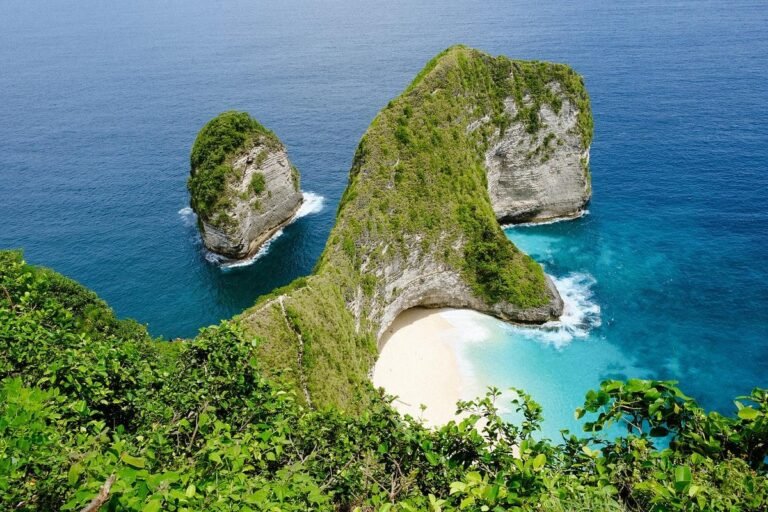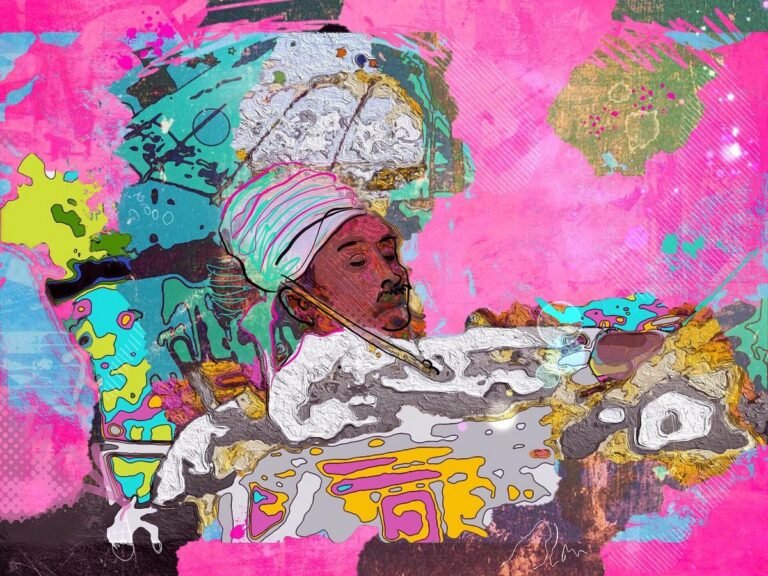Discover the Magic of Elephant Cave Goa Gajah Ubud: A Visitor’s Guide
Planning a trip to Ubud? Don’t miss the Elephant Cave Goa Gajah Ubud, a 9th-century temple rich in Hindu and Buddhist heritage. This ancient site, with its mystical cave, sacred pools, and lush landscape, offers an enriching glimpse into Bali’s cultural and spiritual history. Read on to discover why Goa Gajah Ubud is a must-visit, how to get there, what to expect, and tips for making the most of your visit.
Key Takeaways from Visiting Elephant Cave Goa Gajah Ubud
- Goa Gajah, or Elephant Cave, is a UNESCO-listed site that showcases Bali’s rich cultural heritage through its unique blend of Hindu and Buddhist influences, intricate carvings, and serene temple complex.
- Visitors can reach Goa Gajah easily from Ubud with various transportation options, and should prepare for a 50,000 IDR entrance fee while adhering to a respectful dress code.
- The surrounding area offers additional attractions like Yeh Pulu and Pura Samuan Tiga, along with local culinary delights at nearby restaurants, enhancing the overall visitor experience.
- Don’t forget that Villa Amrita is the perfect place to launch your exploration of Balinese Culture. Get transport, information, and other concierge-style services.
Why Visit Elephant Cave Goa Gajah?
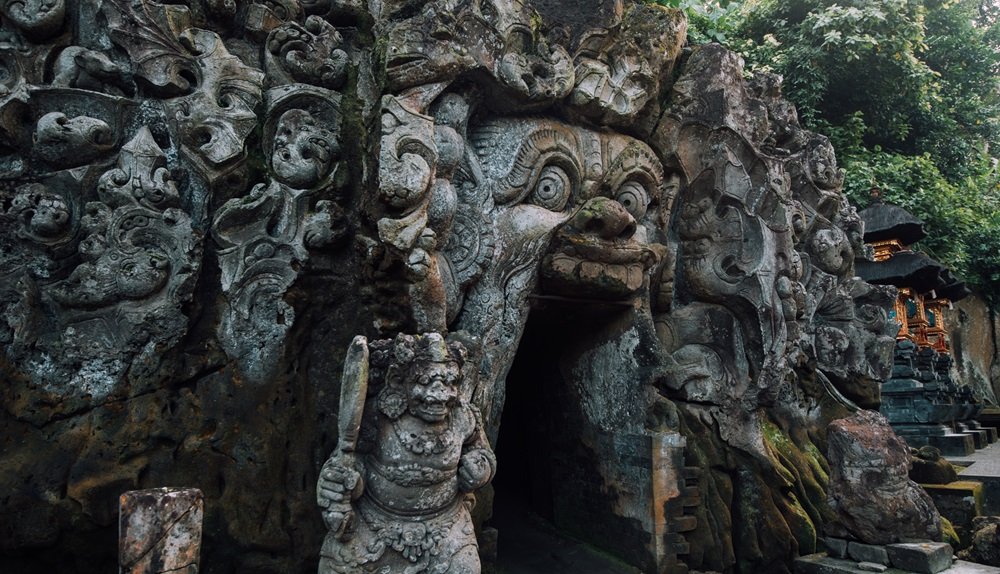
Goa Gajah, often referred to as the goa gajah elephant cave, holds a prestigious place on UNESCO’s World Heritage Tentative List, underscoring its immense cultural significance. The temple’s unique blend of Hindu and Buddhist influences is a testament to Bali’s rich and diverse spiritual heritage. The intricate stone carvings that adorn the entrance, depicting mythological creatures, add to the mystical allure of this ancient site. These features alone make visiting Goa Gajah a must for anyone interested in the island’s cultural and historical depth.
Nestled in a lush, serene landscape, the temple complex offers a sanctuary for meditation and spiritual practices. The tranquil surroundings, enhanced by the vibrant tropical greenery, provide a perfect backdrop for introspection and relaxation. For many, Goa Gajah is not just a historical site but a spiritual powerhouse that continues to play an integral role in the daily lives of the Balinese people. The temple serves as a sacred site for rituals, offering insights into the local culture and traditions.
Adding to its appeal, the architecture and carvings of Goa Gajah reflect the artistry and craftsmanship of the period, showcasing Bali’s rich cultural heritage. The Elephant Cave Temple is more than just a historical monument; it’s a living testament to the island’s artistic legacy. For those seeking to understand the cultural fabric of Bali, a visit to Goa Gajah provides a unique and enriching experience.
How to Get to Goa Gajah
Reaching the Elephant Cave is relatively straightforward, thanks to its strategic location at Jalan Raya Goa Gajah in Bedulu, Gianyar Regency. Whether you’re staying in Ubud or other parts of Bali, a variety of transportation options are available. Taxis, rental cars, and guided tours are some of the most convenient ways to get there. If you prefer a guided experience, many tour packages include transportation and a knowledgeable guide who can provide deeper insights into the temple’s history and significance.
For those staying in Ubud, the journey to Goa Gajah takes about an hour from Denpasar. If you’re staying at Villa Amrita, you can ask Mr. Made Taro for a comfortable ride to the temple.
Free parking is available for scooters, cars, and buses, making it easy for those who choose to drive. Renting a car with a driver is also a good option to avoid parking issues and road congestion.
Entrance Fees and Opening Hours
Before embarking on your adventure to Goa Gajah, it’s important to know the entrance fee and opening hours. The entrance fee for the Elephant Cave is approximately 50,000 IDR. It’s crucial to bring cash as no ATMs are available on site. The temple complex is open every day from 08:00 to 16:00, giving you ample time to explore its many features.
Maximize your visit by going early in the morning or later in the afternoon to avoid heat and crowds. The dry season, from April to October, is the best time to visit, providing a more comfortable and enjoyable experience. Visiting during these times ensures you can fully appreciate the serene and spiritual ambiance of the temple complex.
Dress Code and Etiquette
When visiting Goa Gajah, it’s important to adhere to the dress code and etiquette to show respect for this sacred site. A sarong and waist sash must be worn to cover your knees and chest before entering the temple. Complimentary sarongs are provided at the entrance, but you can also bring your own if you prefer. If you wish to purchase a personal sarong, they are available at local craft shops, though it’s wise to be cautious of opportunistic sellers.
Respectful behavior is essential during your visit. Avoid interfering with worship and refrain from wearing revealing clothing. The temple is a place of prayer and meditation, and maintaining a quiet and respectful demeanor enhances the experience for everyone.
Following these guidelines helps preserve the sacred atmosphere of Goa Gajah.
Exploring the Temple Complex
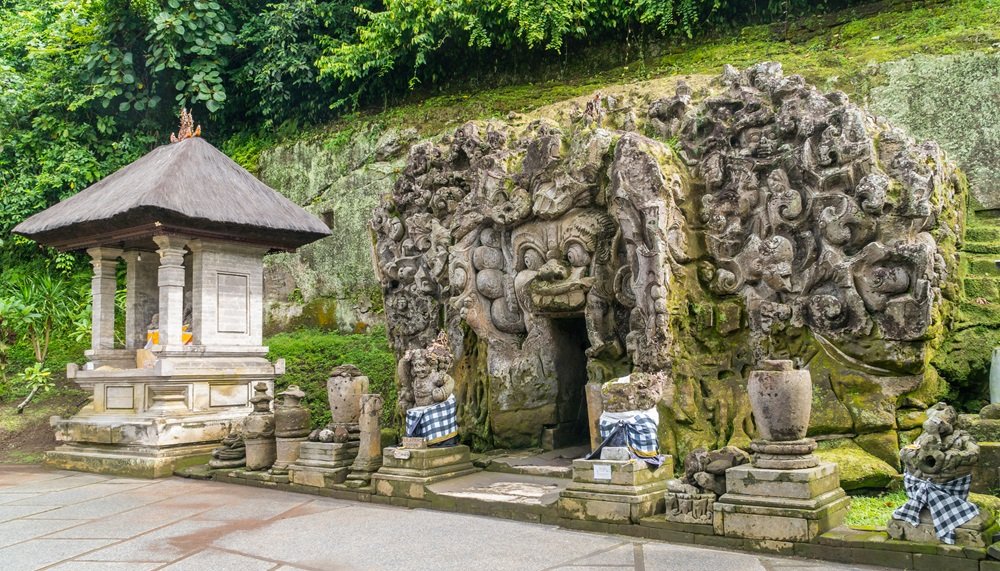
The Goa Gajah Temple Complex is a treasure trove of historical and spiritual significance. As you wander through the site, you’ll encounter the iconic Elephant Cave, sacred bathing pools, and surrounding sacred areas. Each part of the complex offers unique insights into the cultural and religious practices of ancient Bali.
The intricate carvings and serene gardens add to the site’s mystical charm, making it a must-visit for anyone interested in Bali’s rich heritage.
The Main Cave
At the heart of the complex lies the main cave, known for its striking entrance featuring a large face carved into the stone. This gaping mouth, believed to represent an elephant, serves as the cave entrance and is adorned with intricate carvings of mythological figures. Inside the cave, you’ll find three stone idols draped in colored cloth, creating a spiritual ambiance enhanced by the blackened walls from incense smoke. The cave’s narrow path and niches, likely used for meditation by ancient priests, invite personal reflection and exploration.
The main cave’s significance goes beyond its physical structure. It has been a sanctuary for meditation and spiritual practices for centuries. The presence of stone idols and the lingering scent of incense make it a powerful place for contemplation.
As you explore the cave, you’ll feel a profound connection to the past and the spiritual traditions that have been practiced here for generations.
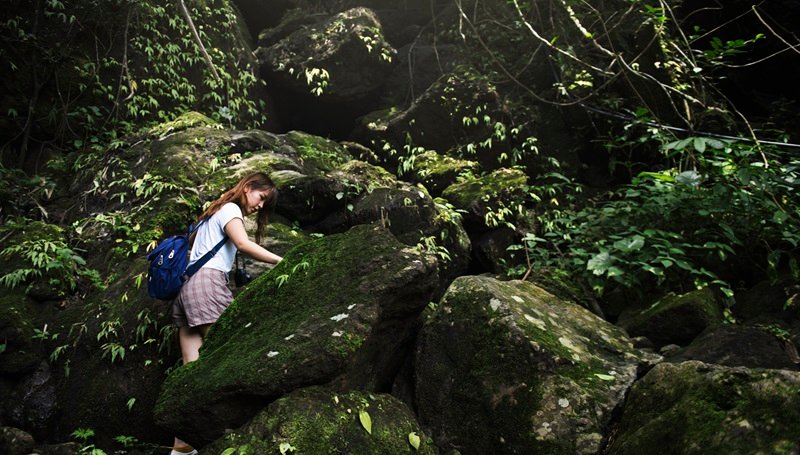
Holy Bathing Pools
The sacred bathing pools at Goa Gajah are an integral part of the temple complex, symbolizing renewal and purification in Hinduism. Discovered in 1954, these pools are adorned with statues of Hindu angels that serve as waterspouts, adding to their spiritual significance. The surrounding statues of nymphs and sacred springs further enhance the site’s mystical atmosphere, symbolizing fertility and the continuous flow of life.
These bathing pool were rediscovered in 1954, revealing their historical and cultural importance. The holy water from the springs is believed to have purifying properties, and the pools were historically used for ritual cleansing.
As you stand by the pools, you can almost feel the spiritual energy that has drawn worshippers to this sacred place for centuries.
Surrounding Sacred Areas
Beyond the main cave and bathing pools, the surrounding sacred areas of the temple complex offer additional layers of spiritual and historical significance. The Tukad Pangkung area, with its older section featuring Buddhist imagery and temple ruins, provides a glimpse into the ancient religious practices of the region. The black and white checkered cloths draped around the ruins signify their continued reverence.
The lush gardens, ancient trees, and tropical plants that surround the hindu temple complex create a serene atmosphere, perfect for spiritual meditation and reflection. Near the cave, a large pond guarded by six statues of angels adds to the spiritual ambiance.
The natural features, including a lotus pond and an ancient Ceiba tree, enhance the tranquility of the area, making it an ideal spot for those seeking peace and spiritual connection.
Historical Background
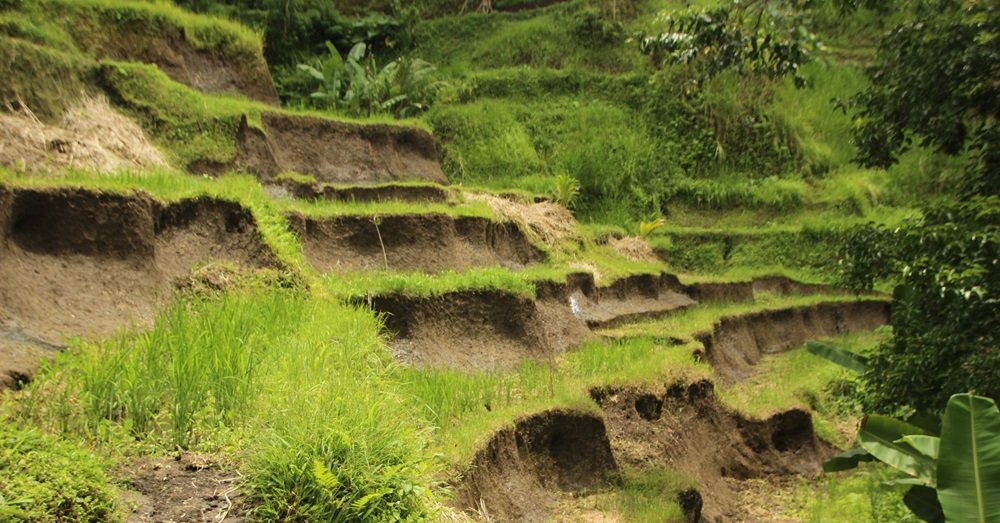
Goa Gajah’s roots trace back to the 9th century, making it one of Bali’s most significant historical sites. Originally constructed as a meditation sanctuary for monks, the temple embodies the spiritual and cultural richness of ancient Bali. The cave was rediscovered by Dutch archaeologists in 1923, which brought it to the attention of the global community and highlighted its historical importance. Goa Gajah translates to “Elephant Cave,” reflecting its unique features.
Since its rediscovery, the site has undergone various restoration efforts to preserve its historical integrity while maintaining its original charm. Although it was added to the UNESCO World Heritage Tentative List in 1995, it was removed in 2015 to preserve it primarily for locals and limit tourism.
These efforts ensure that visit goa gajah remains a well-preserved window into the past, offering visitors a glimpse into the spiritual and cultural practices of ancient Bali.
Architectural Significance
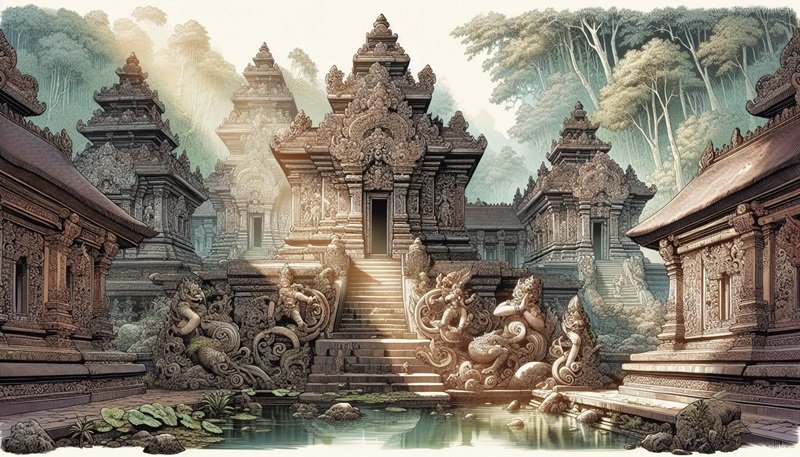
The architectural significance of Goa Gajah lies in its blend of Hindu and Buddhist elements, reflecting the island’s diverse religious heritage. The temple complex features intricate carvings of mythological figures and deities, showcasing the artistry and craftsmanship of the period. The mix of Hindu and Buddhist architecture is a testament to Bali’s spiritual and cultural fusion, making Goa Gajah a unique temple in the region.
Carvings at Goa Gajah are not merely decorative; they carry deep symbolic meaning. They include representations of Shiva’s symbols, such as lingam and yoni, and statues of divine figures from both Hindu and Buddhist traditions, including carved images of the Hindu god Ganesh. These elements underscore the temple’s importance as both a sacred site and an architectural marvel, attracting those who value its spiritual and artistic aspects.
Nearby Hidden Gems
The area surrounding Goa Gajah is rich with hidden gems that offer additional cultural, historical, and natural experiences. Pejeng and Bedulu, nearby villages, are worth exploring for their own unique attractions.
The Tukad Pangkung area is noted for its Buddhist imagery and remnants of ancient temple structures. Additionally, the Setia Darma House of Mask and Puppets provides a fascinating look into traditional Balinese artistry.
Yeh Pulu
Just a short distance from Goa Gajah lies Yeh Pulu, a site renowned for its ancient rock carvings and serene atmosphere. The intricate designs etched into the rocks reflect the artistic heritage of the region, offering a glimpse into Bali’s past. As you explore Yeh Pulu, you’ll be surrounded by lush greenery and the soothing sounds of nature, making it a perfect spot for contemplation and relaxation.
Yeh Pulu’s blend of ancient art and natural beauty makes it a must-visit for anyone interested in Bali’s history and culture. The peaceful environment and the captivating rock carvings provide a unique experience that complements a visit to Goa Gajah.
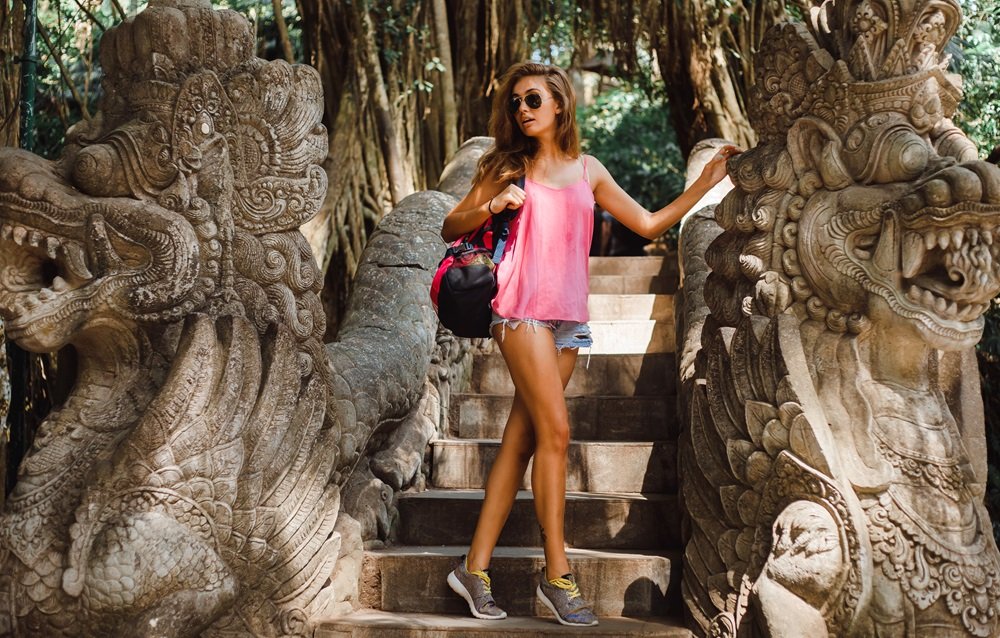
Pura Samuan Tiga
Another hidden gem near Goa Gajah is Pura Samuan Tiga, known for its historical significance and stunning architecture. The temple’s design reflects the intricate craftsmanship found in Balinese temple structures, making it a visually impressive site. Pura Samuan Tiga has played a long-standing role in Balinese culture and spirituality, adding to its importance as a historical site.
Visitors to Pura Samuan Tiga can enjoy a serene and tranquil atmosphere, ideal for reflection and meditation. The temple’s beautiful surroundings and peaceful ambiance make it a perfect complement to the more bustling and tourist-heavy sites in the area.
Kumbasari Traditional Market
The Kumbasari Traditional Market is perfect for those wanting to take home a piece of Bali’s culture. The market offers a wide variety of Balinese handicrafts, jewelry, and textiles, providing an excellent opportunity for souvenir shopping. Visitors can find unique Balinese crafts that reflect the island’s rich cultural heritage, making it an ideal place to purchase gifts and mementos.
The vibrant atmosphere of the Kumbasari Traditional Market adds to its charm. As you browse through the stalls, you’ll get a sense of the local culture and craftsmanship that make Bali so special. This market is not just a place to shop but a cultural experience in itself.
Culinary Delights Near Goa Gajah
No visit to Goa Gajah would be complete without indulging in some of the local culinary delights. Warung Babi Guling Ibu Oka is renowned for its traditional Balinese roasted suckling pig, offering a true taste of the island’s cuisine. For a more traditional Balinese dining experience, Jala Restaurant serves ceremonial dishes like bebek betutu and satay lilit. These eateries provide a delicious and authentic culinary experience that complements your visit to the temple.
For those looking for a mix of Indonesian, Asian, and Western comfort food, Terra Ubud is an excellent choice. The restaurant offers views of Ubud’s bustling Hanoman Street, adding to the dining experience. Additionally, The Riverside restaurant specializes in high-end bistronomy, merging culinary influences from Italy, Spain, and Greece in a scenic riverside setting.
Travel Tips for Visiting Goa Gajah
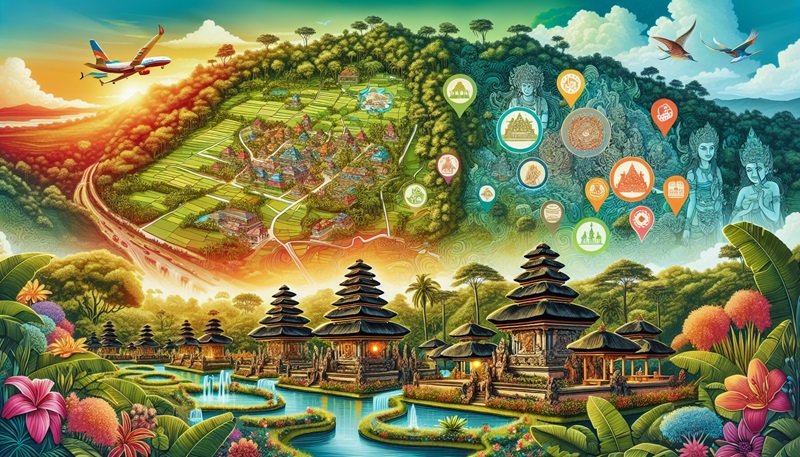
For a smooth and enjoyable visit to Goa Gajah, consider these travel tips:
- Safe transportation options from Central Ubud include using Grab or Go-jek rideshare apps, which are convenient and reliable.
- Motorcycle rentals and car rentals with drivers are also popular choices, providing flexibility and ease of travel.
- If you prefer a more structured visit, guided tours offer transportation and valuable insights about the temple’s history and significance.
- Local guides are usually available at the temple entrance and can greatly enhance your understanding of the site.
Visiting early in the morning or late in the afternoon helps you avoid the heat and crowds. This way, you can enjoy a more comfortable experience. While at the temple, it’s important to exhibit respectful behavior, refrain from loud noise, and avoid touching or climbing on structures. Following these guidelines will help preserve the site’s integrity and ensure a pleasant experience for all visitors.
Staying at places like Villa Amrita Ubud Bali can also enhance your trip, offering a comfortable base from which to explore Goa Gajah and other local attractions.
Ultimate Guide to Exploring Elephant Cave Goa Gajah: Key Highlights and Tips
For your information, Goa Gajah, or the Elephant Cave, is a mesmerizing blend of historical significance, architectural beauty, and spiritual tranquility. From its intricate carvings and sacred bathing pools to its lush, serene surroundings, the temple complex offers a unique window into Bali’s rich cultural tapestry. Whether you’re drawn by its historical roots, spiritual ambiance, or artistic marvels, Goa Gajah provides an unforgettable experience. We hope this guide has equipped you with all the information you need to fully appreciate and enjoy your visit to this magical site.
Frequently Asked Questions
What is the entrance fee for Goa Gajah?
The entrance fee for Goa Gajah is around 50,000 IDR, so make sure to bring cash since there are no ATMs on-site!
What should I wear when visiting Goa Gajah?
You’ll need to wear a sarong and waist sash when visiting Goa Gajah, so it’s best to either grab a complimentary one at the entrance or bring your own. Just remember to keep those knees and chest covered!
What are the best times to visit Goa Gajah?
If you want to enjoy Goa Gajah without the crowds and heat, visit early in the morning or late in the afternoon during the dry season from April to October. It’ll make your experience much more enjoyable!
How can I get to Goa Gajah from Ubud?
You can easily get to Goa Gajah from Ubud by using rideshare apps like Grab or Go-jek, or consider renting a motorcycle or use a car with a driver. Guided tours are also a great option if you want transportation and some local insights along the way.
Are there any nearby attractions to visit along with Goa Gajah?
Absolutely, you can explore Yeh Pulu’s ancient rock carvings, Pura Samuan Tiga’s stunning architecture, and the Kumbasari Traditional Market for some great souvenir shopping right near Goa Gajah. Enjoy the variety!

